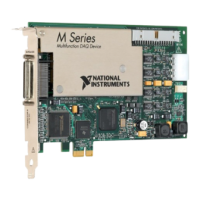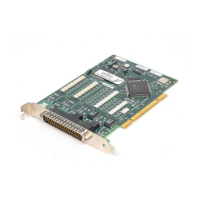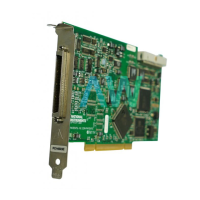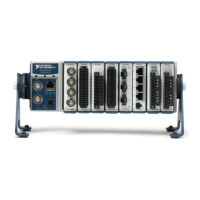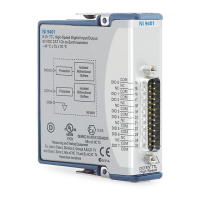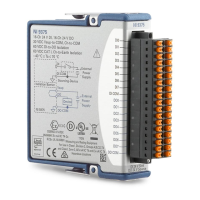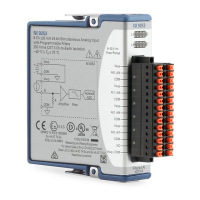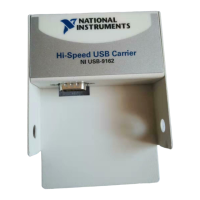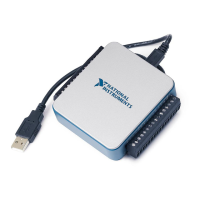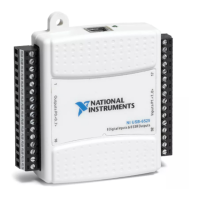5-2 | ni.com
Chapter 5 Analog Output
AO Reference Selection
AO reference selection allows you to set the analog output range. The analog output range
describes the set of voltages the device can generate. The digital codes of the DAC are spread
evenly across the analog output range. So, if the range is smaller, the analog output has better
resolution; that is, the voltage output difference between two consecutive codes is smaller.
Therefore, the analog output is more accurate.
The analog output range of a device is all of the voltages between:
-AO Reference and +AO Reference
The possible settings for AO reference depend on the device model. For models not described
below, refer to the device specifications.
•
(NI 6321/6323/6341/6343/6346/6349 Devices) The AO reference is always 10 V. The
analog output range equals ±10 V.
• (NI 6345/635
x/636x/637x/6386/6396 Devices) The AO reference of each analog output
(AO <0..3>) can be individually set to one of the following:
–10V
–5V
– APFI <0,1>
You can connect an external signal to APFI <0,1> to provide the AO reference. The AO
reference can be a positive or negative voltage. If AO reference is a negative voltage, the
polarity of the AO output is inverted. The valid ranges of APFI <0,1> are listed in the
device specifications.
You can use one of the AO <0..3> signals to be the AO reference for a different AO signal.
However, you must externally connect this channel to APFI 0 or APFI 1.
Note When using an external reference, the output signal is not calibrated in
software. You can generate a value and measure the voltage offset to calibrate your
output in software.
Minimizing Glitches on the Output Signal
When you use a DAC to generate a waveform, you may observe glitches on the output signal.
These glitches are normal; when a DAC switches from one voltage to another, it produces
glitches due to released charges. The largest glitches occur when the most significant bit of the
DAC code changes. You can build a lowpass deglitching filter to remove some of these glitches,
depending on the frequency and nature of the output signal. Visit ni.com/support for more
information about minimizing glitches.
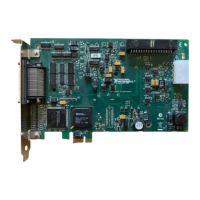
